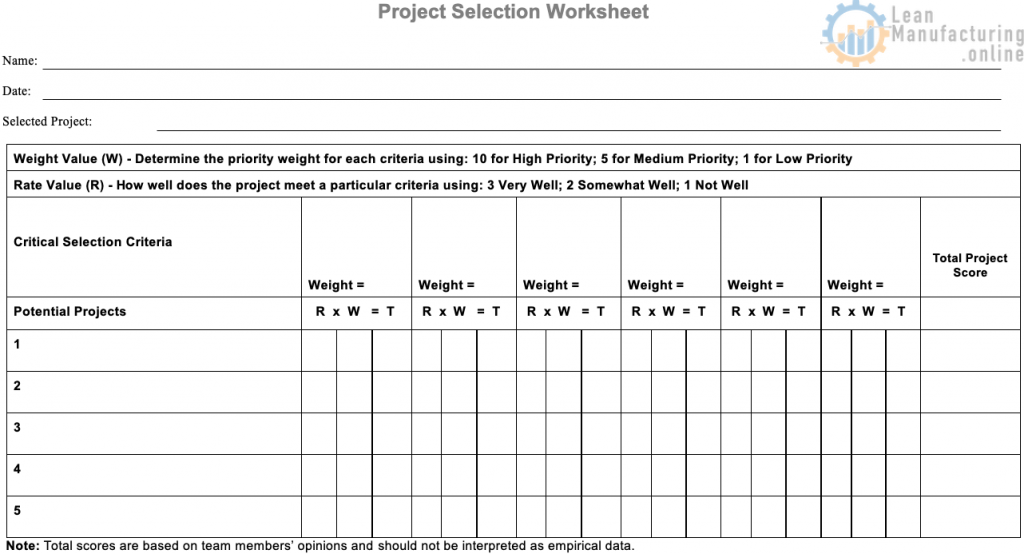In the Selection Phase, potential projects are identified. Nominations can come from various sources, including associates and customers. To avoid sub-optimization, potential projects have to be evaluated in order to select the one(s) that is of significant importance to the organization and its performance. The organization’s Strategic Plan can provide guidance in the selection of projects. In order to be considered for a Project, the problem MUST satisfy the following “MUST HAVE CRITERIA”:
- Chronic
- Significant
- Manageable Size
- Likely to be a Winner
- Measurable
Critical Success Criteria are then used to further evaluate the remaining Projects. These are the “critical for success” criteria that a project must be able to deliver in order for it to be important and of value to the organization. Examples of such criteria, by category, are:
Impact
- Improve Customer Satisfaction
- Retain and Attract Customers
- Will improve on-time delivery
- Provide ROI
- Provide ROI of at least $250,000
- Reduce Cost of Poor Quality
- Will provide a reduction in waste
- Will reduce defect levels
- Will reduce downtime
- Enhance Associate Satisfaction
- Improve Profitability
- Will increase capacity
- Is attainable within 4-6 months
Urgency
- Decrease Vulnerability Against Competitor
- Is a Critical Customer Issue
- Is Critical to Organization’s Survival
- Needs Immediate Attention
Risk
- Low Risk of Divulging Negative Information
- Low Risk of Decreasing Customer’s Confidence
- Low Risk of Losing A Customer
- Low Risk of Damaging Organization’s Image
To determine the Critical Success Criteria, simply select the ones that are important to your organization. Or you might have to create some of your own. To create your own, state it in terms of what is GOOD or desired. Doing so can decrease the potential for opposing value confusion during the weighting and ranking process.
How to complete the project selection matrix.
- Record name of person(s) involved in evaluation. Can be a team name or individuals.
- Record date matrix was completed.
- Determine the priority Weight Value (W) for each critical success criteria. Once the weight is established, it remains a constant weight value for all projects.
- Determine the Rate Value (T) which answers the question of how well does a project meet each individual criteria.
- Calculate project sub-totals by R x W = T.
- Calculate the Total Project Score by aggregating the project sub-totals.
- The project that has the highest total score is considered to be the best project (or the first) Project. Record the selected project at the top of the matrix.

Weight Value (W) – Determine the priority weight for each criteria using: 10 for High Priority; 5 for Medium Priority; 1 for Low Priority
Rate Value (R) – How well does the project meet a particular criteria using: 3 Very Well; 2 Somewhat Well; 1 Not Well















